
News

Precision, repeatability and reliability? Automatic grit-set
As technology advances, so does the need for cutting-edge solutions to enhance the efficiency and quality of production processes. CMS presents the advanced automatic grit-set feature also for the DMC m950 range, providing electronic regulation of the contact roller position to compensate for abrasive belt wear. This feature ensures precise, automated control over the working position so that the machine always maintains optimal efficiency, regardless of its conditions of use.
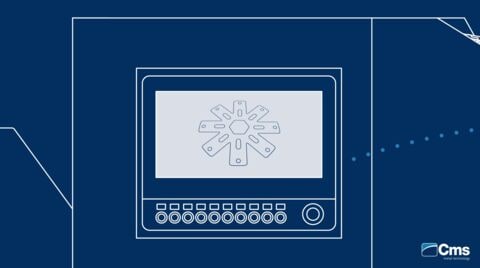
DDX EasyJet software: from prototyping to production in one click!
The versatility and potential of waterjet cutting technology are combined with the new DDX EasyJet, the complete CMS suite that brings together several applications in one software to program machining processes quickly and easily.
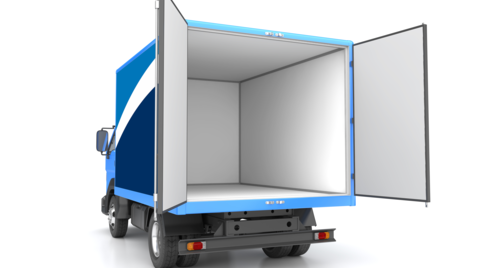
CMS transports and preserves your ideas! All-round solutions for isothermal walls
Thermally insulating a truck body can make all the difference, especially when transporting goods that are sensitive to temperature changes or getting fresh, well-preserved food to our tables. Isothermal walls are the structural basis of the insulated body, and bring significant benefits because they:
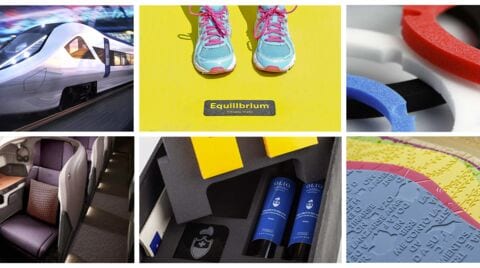
Cutting soft materials: the 5 questions you should ask
The versatility of waterjet cutting technology enables a wide range of materials to be processed in various sectors, such as: construction, thermal and acoustic insulation, automotive, aerospace, railway, packaging, footwear, sealing.
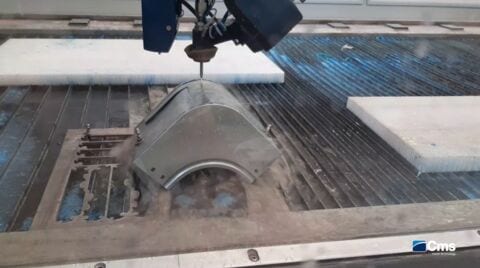
Discover the waterjet 3D cutting!
One of the key advantages of waterjet technology is that being an erosive process, there is no relevant physical contact between the cutting process and the part being processed, by making the worktable set up quicker and simpler to operators.
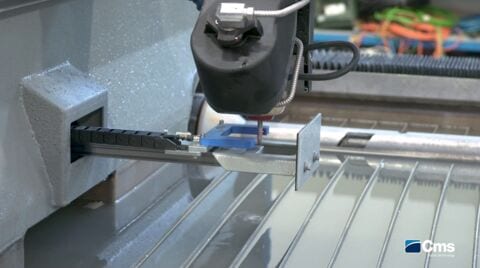
Maximum precision and flexibility: discover the benefits of automatic TCP measurement!
CMS waterjet cutting technology offers tremendous benefits in terms of flexibility and ease of use and is a winning solution in metal alloy, composite and plastic cutting applications. The 5-axis configuration can perform precision mechanical machining, dynamic water jet compensation, and edge caulking for welding.
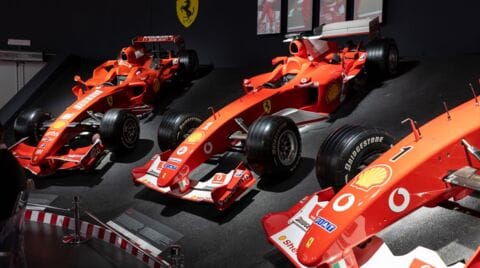
CMS at Ferrari Museum in Maranello
Last November 16th, we lived unforgettable moments together with some of our clients at the Ferrari Museum in Maranello. Presenting our technologies in such a unique context, rich in the history of the quintessential Italian automotive house, was an exciting experience.
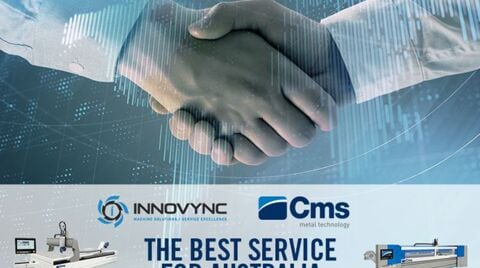
CMS and INNOVYNC
CMS further strengthens its presence in Australia, by formalizing the agreement reached with INNOVYNC. A key player in the world of metal, Innovync becomes the new service and sales provider in Australia for CMS Metal Technolgy.
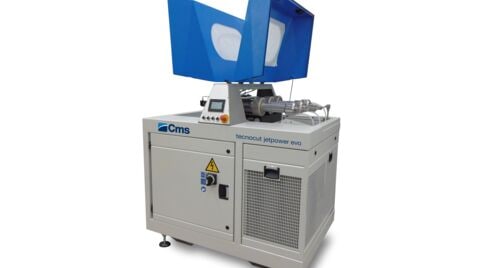
Tecnocut jetpower evo: the excellence of tradition
In the world of pressure intensifiers for waterjet cutting, CMS stands out by offering the market a unique model featuring a parallel-cylinder design. This type of architecture can maintain an output pressure with a constant signal, without the need to install an additional downstream accumulator, a requirement typical of the opposing-cylinder intensifiers on the market.
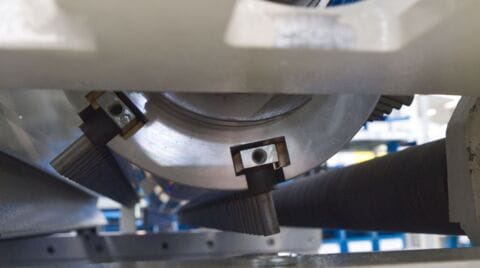
Save time and improve productivity with the Hammerbolt Deslagging Unit!
Thermal cutting of sheet steel, typically done with flame or plasma cutting technology, leads to the formation of small pieces of metal, known as slag, which melt and adhere to the edges of the workpiece when it cools. Why is slag removal critical? Metal slag compromises the quality of the workpiece, contributes to structural weakening, and diminishes its aesthetic appeal. Moreover, it hinders the production process by complicating the coating application on the workpiece surface.
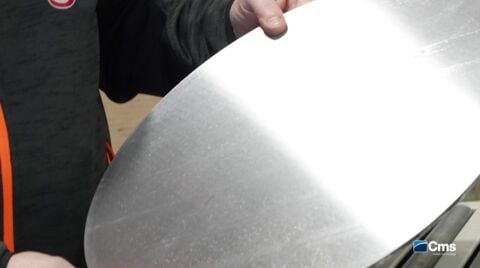
Z3 and CMS: at the heart of metal cleaning
We are going to Z3 in Emilia-Romagna, a business that has been processing a wide range of ferrous and non-ferrous alloys since 1995. Upon entering, we immediately sense the vibrant atmosphere of a dynamic company that is continuously evolving technologically, aiming to provide its customers the best service with excellent value for money. That is why Z3 collaborates with approximately 300 companies.
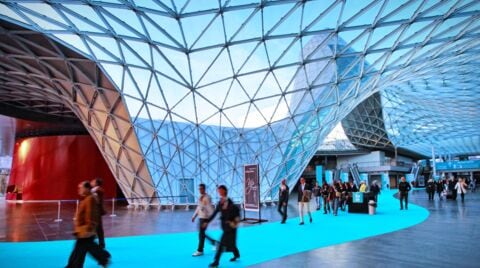
Here are 5 reasons for taking waterjet technology for cutting pipes into consideration
Waterjet technology is a versatile cutting method that can cut a wide range of objects and materials. As the image above shows, we will discuss here how waterjet technology can be useful in cutting pipes.
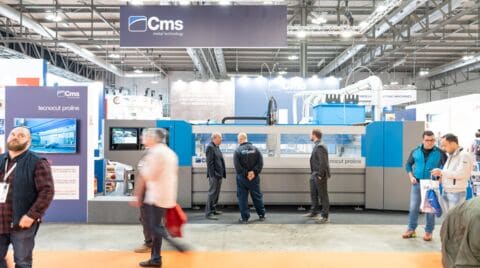
Lamiera 2023
We have just got back from Lamiera 2023! It was nice to share our technology for metal processing with all of you who came to visit us. We hope to see you soon!
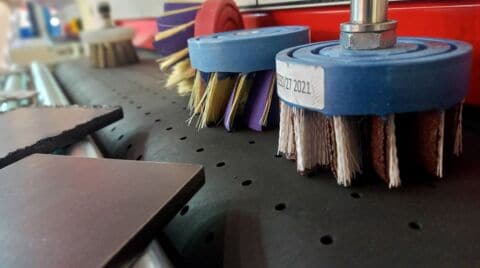
The DT15 disc unit: efficient, immediate, cost-effective
After the laser cut, even the smallest pieces have the so-called cutting, that is, an almost imperceptible burr on the under edge. It can become a genuine knife edge for those handling and maneuvering the piece, and in the case of noticeable burr, it is even unsightly. It needs to be removed!

Intelligent maintenance gives you more free time!
Mixing water at high pressure with abrasive granite makes cutting hard, very thick materials easy. Used abrasive gathers in the collection tank during this process and should be removed from the outside and disposed of in special bags.

The ideal combination for increasing productivity
When processing soft materials, like foam and seals, the cost of production is a key factor that requires maximum process efficiency and the ability to deal with high volumes.

JetShield: protect your waterjet machine from high-pressure wear
CMS has devised a solution that is both simple and innovative to keep the circuit constantly at cutting pressure even when loading and unloading the material to be cut without compromising the conditions of maximum safety for the operator. JetShield is the “glass”-shaped device installed inside the tank that can house the cutting head’s mixing tube safely, becoming a genuine shield that protects the operator should the cutting head accidentally open.
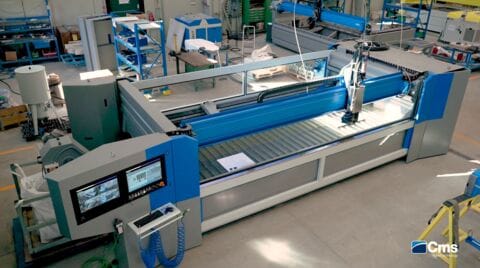
The only real waterjet machining center: the time lapse of its construction
F.lli Sacchi was established at the start of the 1900s, and is a global leader in innovative systems for transport, dosage, storage, packaging and palatalization of loose products in granule and powder form. The company’s uniqueness lies in having invented robotics applied to powder and granules. Since 2015, F.lli Sacchi has chosen CMS as a technological partner in supporting its growth thanks to the quality and reliability of the products in the CMS waterjet range, capable of combining cutting with versatility and flexibility with the simplicity of programming. Sacchi recently opted to add the innovative and unique CMS tecnocut proline waterjet machining center to its range of machines.
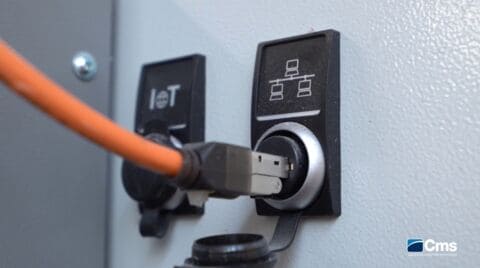
Connected machines are the present, not the future!
Mistral Optical is a company producing, on average, 50,000 pairs of glasses a month. It is located in Quero Vas in the region of Belluno, global center for eyewear. Working on a pair of glasses is a complex operation that needs to find the perfect balance between expert manpower and automated work done by machines. There are about 30 intermediate stages. Knowing exactly at which stage a product can be found in the various processes, at any given time, is the turning point in the entire production chain; representing real added value in the service offered to one’s clients. Precisely with this in mind, the company decided to connect the numerous CMS machines together, from the latest additions to older versions.
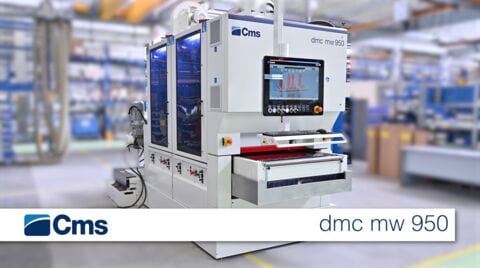
Maintenance is an ally not a nightmare for wet finishing!
CMS designed and built the new dmc m950 wet M6 with the objective to ensure both simplicity and accessibility, to make cleaning and washing a fast, efficient operation that ensures top quality and performance over time, and work uniformity as well.
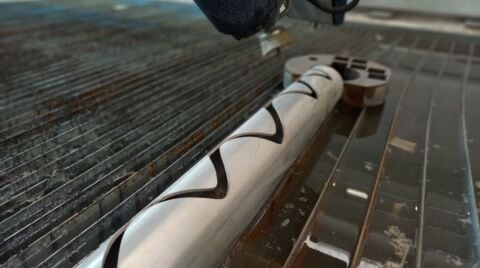
3D cutting, the new frontier in waterjet technology
Now we can move forward and reach new levels: The combination between the 5-axis JD5 cutting head and the software DDX Easyjet offers an opportunity to expand the cutting capabilities of waterjet machines in the CMS range, by expanding application limits! Due to the intuitive and user friendly programming, by starting with a 3D model, it is now possible to control every processing aspect from the direction of the cutting head to actual head movements, in order to avoid collisions with the piece.

What happens after the laser cut?
After the laser cut, even the smallest pieces have the so-called cutting, that is, an almost imperceptible burr on the under edge. It can become a genuine knife edge for those handling and maneuvering the piece, and in the case of noticeable burr, it is even unsightly. It needs to be removed! The most effective method? The DT15 disc unit found on the eurosystem models and metal system of the DMC range.
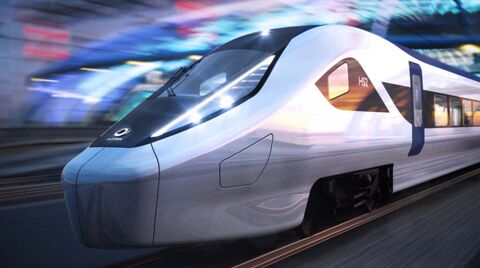
Cutting soft materials
The versatility of the waterjet cutting technology allows you to process a vast range of materials in different industries, such as: construction, refrigeration, automotive, aerospace, railway, packaging, footwear, and sealing.